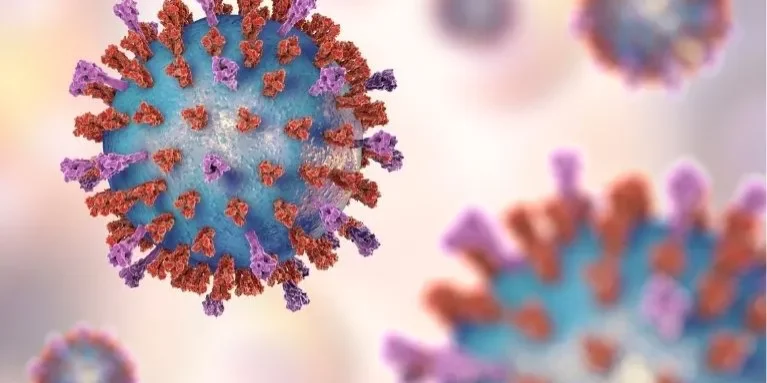
What Is Respiratory Syncytial Virus (RSV)?
Respiratory syncytial (sin-SISH-uhl) virus (RSV) is a common virus that infects the nose, throat, lungs, and breathing passages. It spreads through droplets from an infected person when they cough, sneeze, or kiss. You can also catch it by touching surfaces with the virus on them and then touching your eyes, nose, or mouth.
RSV can live for many hours on hard surfaces like tables and cribs, but it does not last as long on soft surfaces like tissues or hands. Children are often exposed to RSV outside the home at school or daycare and can bring it home to others. RSV is so common that almost all children will have had it by their 2nd birthday.
While RSV can be serious for very young children and older adults, it can affect people of any age. Roughly 80% of children younger than age 2 years who are hospitalized with RSV do not have risk factors.
Burden
Even though RSV often causes mild, cold-like symptoms, it can be serious for infants, toddlers, and older adults, and it can lead to severe illness and hospitalization. In the US, RSV is the most common cause of hospitalization in children under 1 year old.
- Each year in the US, RSV leads to approximately 2.1 million outpatient visits and 58,000-80,000 hospital stays among children younger than 5 years
RSV is also becoming more recognized as a major cause of respiratory illness in adults.
- Each year in the US, RSV is estimated to cause 100,000-160,000 hospitalizations in adults age 60 years and older
The actual burden among all age groups is likely even higher due to underreporting of RSV infections.
Those at highest risk for severe disease from an RSV infection include:
- premature infants and infants age 6 months and younger
- adults with chronic heart or lung disease or certain other underlying medical conditions, including diabetes or obesity
- adults with weakened immune systems
- older adults, especially those who are frail or live in a nursing home
For additional information, read the NFID Progress Report: Reducing the Burden of RSV across the Lifespan and Reducing the Burden of Respiratory Syncytial Virus Across the Lifespan by NFID Spokesperson William Schaffner, MD.
Symptoms
RSV symptoms are similar to other respiratory viruses, such as influenza (flu) or COVID-19. They include runny nose, coughing, sneezing, fever, loss of appetite, and wheezing.
In very young babies, the only symptoms may be fussiness, less activity, and trouble breathing. People with RSV usually start showing symptoms 4 to 6 days after getting infected. Healthy adults may not have many symptoms but can still spread the virus to others.
Most people with RSV are contagious for 3 to 8 days and get better in 1 to 2 weeks. However, some infants and people with weakened immune systems can keep spreading the virus for up to 4 weeks, even after they feel better.
In the US, RSV usually spreads in fall and winter, like other seasonal viruses such as flu. Because RSV symptoms are similar to flu or COVID-19, it can be hard to know if someone has RSV without a lab test.
Prevention
The best ways to help prevent the spread of RSV include the following:
- Cover coughs and sneezes
- Wash hands often with soap and water for at least 20 seconds
- Avoid close contact with others who are sick
- Avoid touching the face, particularly eyes, nose, and mouth
- Clean frequently touched surfaces (such as doorknobs)
- Consult a healthcare professional if you have cold-like symptoms that linger or worsen
- Get immunized to protect against severe RSV, if recommended
Vaccines and preventive monoclonal antibodies can help protect against RSV:
Adults: A single dose of RSV vaccine is recommended to protect all adults age 75 years and older and adults age 60-74 years who have certain risk factors.
Infants/Babies: 2 RSV immunization options are available to protect babies from severe RSV—either a maternal RSV vaccine given to the pregnant mother or an RSV antibody given to the baby.
The Centers for Disease Control and Prevention (CDC) has updated recommendations for RSV vaccines in adults. For the 2024-2025 respiratory season, CDC recommends RSV vaccination for:
- All adults age 75 years and older
- Adults age 60–74 years who are at increased risk of severe RSV, including:
- Those with certain chronic health conditions, such as lung disease or heart disease
- Those who live in nursing homes
- RSV vaccination is recommended as a single dose, so adults who already received a dose last season do not need to receive another dose during the 2024-2025 respiratory season
CDC recommends protecting all infants against severe RSV either through a maternal RSV vaccine given to the pregnant mother or an RSV antibody given to the baby.
- RSV vaccine for pregnant women: CDC recommends the maternal RSV vaccine (Abrysvo®) for pregnant women to help protect babies against severe illness after birth. CDC recommends seasonal administration of 1 dose of the maternal RSV vaccine during weeks 32-36 of pregnancy during September through January.
- RSV preventive antibody for babies: CDC recommends 1 dose of nirsevimab (a long-acting monoclonal antibody) for all infants younger than age 8 months born to mothers who did not receive a maternal RSV vaccine during pregnancy. A nirsevimab dose should be given to babies shortly before the RSV season, or within 1 week after birth if born during October to March in most of the US.
- Nirsevimab is also recommended for a small group of young children age 8-19 months who are at increased risk for severe RSV. This nirsevimab dose should be given shortly before the child’s second RSV season.
Researchers are currently working to develop additional tools to help prevent RSV among specific populations including those who are immunocompromised.
Treatment
There are currently no specific antiviral medications or treatments for RSV disease. The primary treatment for RSV is supportive care and may include oxygen and respiratory care treatments.
Updated September 2024
Sources: American Academy of Pediatricians and Centers for Disease Control and Prevention
Related Resources
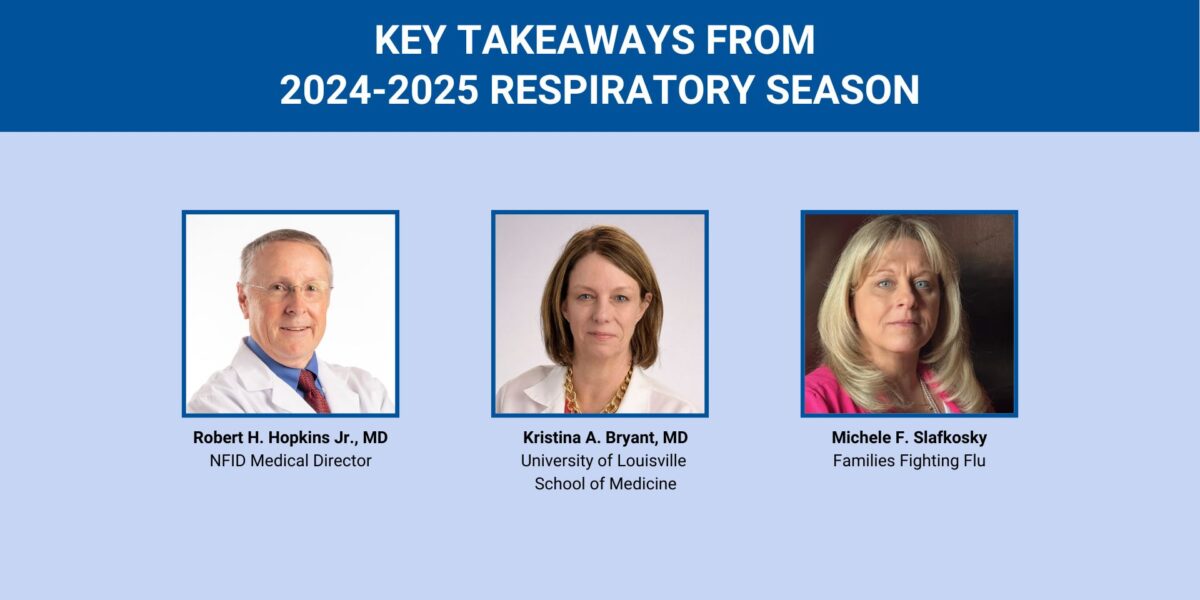
Key Takeaways from 2024-2025 Respiratory Season
In this recorded webinar, NFID hosts a discussion on key takeaways from the 2024-2025 US respiratory season, with a focus on influenza (flu) and more …
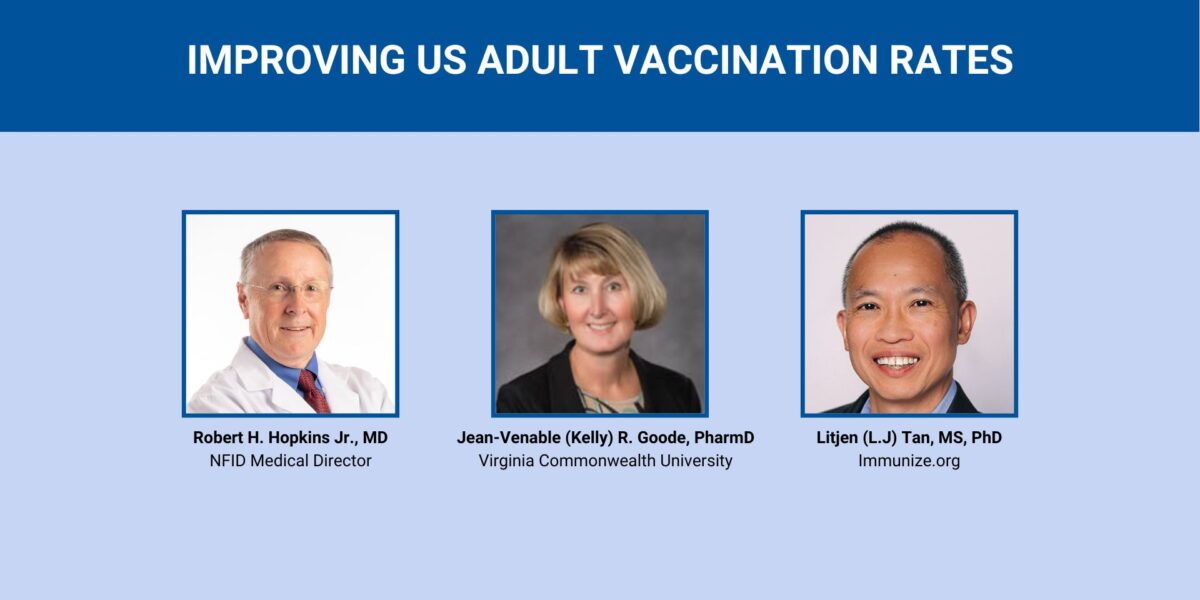
Improving US Adult Vaccination Rates
In this recorded webinar, NFID and partner AMGA host a discussion on strategies to increase vaccination rates among US adults
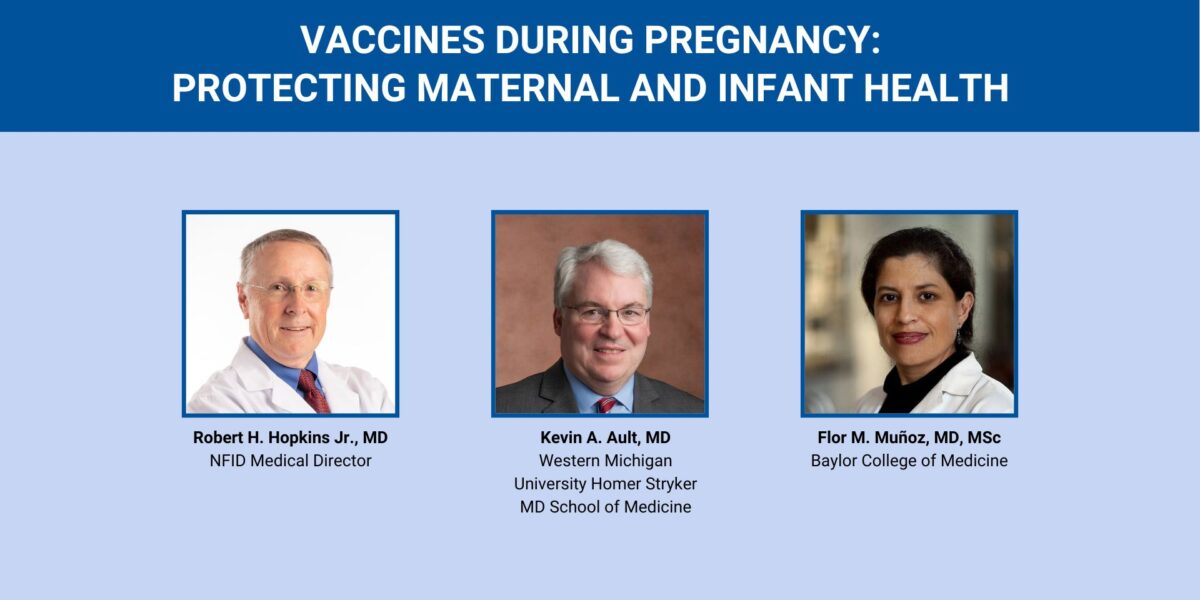
Vaccines during Pregnancy: Protecting Maternal and Infant Health
In this recorded webinar, NFID, and partners ACOG and NCfIH, host a webinar discussion on strategies to help prevent infectious diseases and increase uptake of recommended vaccines during pregnancy
Related Posts

Infectious Diseases in the News
Read recent news of interest from the world of infectious diseases including insights and updates on COVID-19, handwashing, hepatitis, malaria, measles, and respiratory syncytial virus (RSV) …
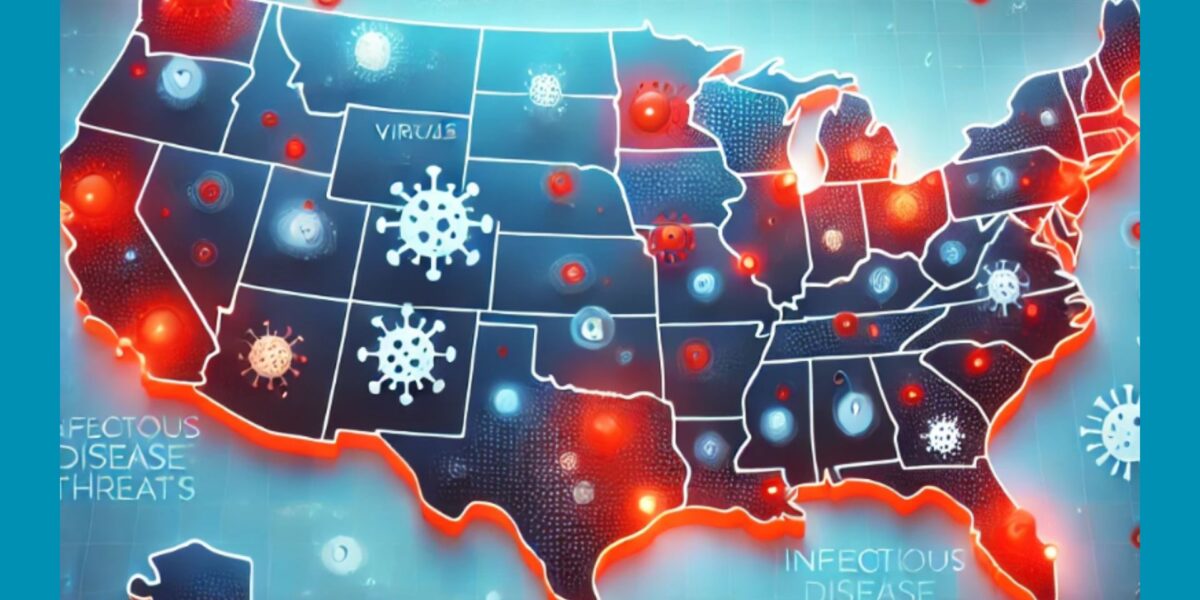
News Round-Up: Infectious Disease Threats
According to NFID website poll, there are several worrisome infectious disease threats. Read recent news on topics of greatest concern, including avian influenza (bird flu), measles, and respiratory syncytial virus (RSV) …

Vaccines and Heart Health: A Vital Connection
Heart disease can increase the risk of serious or fatal complications from respiratory diseases including COVID-19, flu, and RSV
